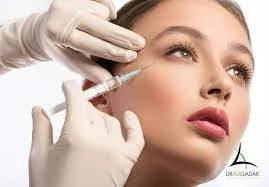Corrective facial surgeries fixing asymmetry and scarring can effectively improve facial harmony and self-esteem. This article will explore the various surgical options for addressing these issues, the conditions they treat, and facial asymmetry surgery cost.
Table of Contents
Key Takeaways
- Facial asymmetry and scarring can significantly affect a person’s appearance and psychological well-being, making effective treatment options essential.
- Surgical procedures such as orthognathic surgery and rhinoplasty, as well as non-surgical options like dermal fillers, can enhance facial symmetry and address visible scarring.
- Choosing the right surgeon is fundamental for achieving successful outcomes; patients should consider qualifications, patient reviews, and ensure clear communication during consultations.
Understanding Facial Asymmetry and Scarring
Facial asymmetry refers to a condition characterized by an imbalance in the size, shape, or position of facial features, often caused by congenital conditions, trauma, or aging. Facial asymmetry, characterized by differences in size, shape, or position between symmetrical features, can dramatically affect one’s appearance and self-esteem. It commonly impacts the eyes, nose, mouth, and jawline, leading to noticeable discrepancies that can be distressing for those affected. The perception of beauty is heavily influenced by facial symmetry, with symmetrical faces often seen as more attractive. Thus, addressing these asymmetries is not just a matter of aesthetics but also of psychological well-being.
Scarring, on the other hand, results from the body’s natural healing process following injury or surgery. These scars can vary in type and severity, ranging from hypertrophic scars to keloids and atrophic scars.
Both facial asymmetry and scarring can significantly impact facial harmony and expressions, making it essential to explore effective treatment options. In the following sections, we will delve into the causes and types of these conditions, providing a foundation for understanding the available corrective procedures.
Causes of Facial Asymmetry
The causes of facial asymmetry are diverse, encompassing genetic factors, lifestyle habits, and medical conditions. Genetic traits play a significant role in determining the shape and size of facial features, with certain family traits leading to common asymmetries within families. Chin asymmetries and other facial feature variations can be inherited, contributing to facial asymmetry.

Medical conditions such as Bell’s palsy, which causes partial facial paralysis, can also lead to noticeable asymmetry due to muscle paralysis. Additionally, facial trauma from accidents, physical altercations, or surgeries can cause structural changes and scarring, further exacerbating asymmetry.
Lifestyle factors, including smoking and sleeping positions, may also contribute to facial asymmetry over time. Understanding these causes is crucial for determining the most effective treatment options for facial asymmetry correction.
Types of Facial Scars
Facial scars can manifest in various forms, each with unique characteristics and implications. Here are the main types of facial scars:
- Hypertrophic scars: These are raised scars that develop due to excessive collagen production during the healing process.
- Keloid scars: These scars extend beyond the original injury site and often require surgical intervention to remove.
- Atrophic scars: These appear sunken and can result from conditions like acne or chickenpox.
Understanding the type of scar is vital for choosing the appropriate scar revision technique, as each type may respond differently to various treatments.
Surgical Procedures for Correcting Facial Asymmetry

Surgical procedures for correcting facial asymmetry are designed to address the underlying structural issues and enhance overall facial harmony. These specific procedures involve techniques such as bone or implant modifications, soft tissue suspension, and fat removal to achieve the desired results. The goal is not only to correct facial asymmetry but also to normalize the surrounding tissue and compensate for asymmetrical aging. Given the complexity of facial asymmetry corrections, most patients may require more than one surgery to achieve their desired results. These complex surgeries demand a high level of expertise to ensure optimal outcomes.
In this section, we will explore four key surgical options:
- Orthognathic surgery
- Chin surgery (genioplasty)
- Eyelid surgery (blepharoplasty)
- Rhinoplasty
Each of these facial procedures targets specific facial features to restore balance and improve aesthetics. The following subsections will provide detailed insights into each of these surgical procedures.
Orthognathic Surgery
Orthognathic surgery, also known as corrective jaw surgery, is a surgical procedure aimed at correcting irregularities in the jaw bones and aligning the teeth to improve facial symmetry and function. This procedure is particularly effective for addressing severe facial asymmetries caused by misaligned jaws or congenital defects.
Repositioning the jawbones through orthognathic surgery enhances facial harmony and overall aesthetics.
Chin Surgery (Genioplasty)
Chin surgery, or genioplasty, involves the use of implants or bone repositioning to correct chin asymmetries and enhance facial balance. This surgical procedure can either increase the projection of the chin through augmentation or decrease its size through reduction.
Genioplasty addresses chin-related asymmetries, significantly improving jawline definition and boosting self-esteem.
Eyelid Surgery (Blepharoplasty)
Eyelid surgery, known as blepharoplasty, is designed to correct asymmetries in the upper and lower eyelids. Upper blepharoplasty addresses excess skin on the upper eyelids, while lower eyelid surgery targets the bags and puffiness under the eyes.
Blepharoplasty enhances eyelid symmetry, improving overall facial expressions and appearance.
Rhinoplasty
Rhinoplasty, commonly referred to as a nose job, aims to reshape the nose and address functional issues such as breathing difficulties. This surgical procedure is performed under general anesthesia and typically lasts between 2 to 4 hours.
Post-surgery, a small skin-tone dressing is applied to support the healing process and achieve the desired nasal contour.
Techniques for Scar Revision
Scar revision techniques are essential for improving the appearance of visible scarring and restoring facial aesthetics. These methodologies include topical treatments, injectables, skin resurfacing, and surgical options. The goal of scar revision is to reduce the visibility of scars, enhance skin texture, and promote the formation of new, healthy skin.
In this section, we will discuss three main scar revision techniques: laser therapy, dermal fillers, and surgical scar revision. Each subsection will provide an in-depth look at how these treatments work and their benefits in reducing scar tissue and improving overall facial appearance.
Laser Therapy
Laser therapy is a modern and effective treatment option for addressing scar tissue. This technique targets scar tissue by modifying the skin’s surface, promoting new skin growth, and reducing the visibility of scars.
Laser therapy removes damaged skin layers and stimulates new skin growth, significantly improving appearance and texture.
Dermal Fillers
Dermal fillers are injectable substances used to add volume and fullness to different areas of the face, including depressed scars. These fillers work by smoothing out fine lines and wrinkles, improving overall skin texture, and raising the depressed areas of the skin.
Injectable fillers are particularly effective for treating indented scars, providing a more even and aesthetically pleasing skin surface.
Surgical Scar Revision
Surgical scar revision techniques, such as Z-plasty and W-plasty, aim to reposition scars to make them less noticeable and improve skin flexibility. These advanced surgical methods can realign scars to blend more seamlessly with the surrounding skin, enhancing facial aesthetics and restoring confidence.
The overall goal of surgical scar revision is to reduce visible scarring and improve the cosmetic appearance of the face.
Non-Surgical Options for Facial Asymmetry and Scarring
Non-surgical treatment options offer less invasive alternatives for enhancing facial symmetry and addressing scarring. These non surgical procedures, such as injectable treatments, are essential for individuals seeking to improve their appearance without undergoing invasive surgical procedures. Non-surgical treatments can effectively correct minor asymmetries and improve skin texture, making them popular choices for many patients. Additionally, thread lifts are an effective non-surgical option for achieving a lifted, firm, and youthful appearance.
In this section, we will explore three main non-surgical options: facial injectables, fat transfer, and chemical peels. Each subsection will provide insights into how these treatments work and their benefits in achieving a more balanced and youthful facial appearance.
Facial Injectables
Facial injectables, including neuromodulators like Botox and dermal fillers, are commonly used to correct minor facial asymmetries. Neuromodulators work by temporarily relaxing muscles, reducing the appearance of asymmetries caused by muscle overactivity.
Dermal fillers add volume to the face, correcting uneven areas and providing a more balanced and youthful appearance.
Fat Transfer
Fat transfer involves the transfer of excess fat from one area of the body, such as the abdomen or thighs, to the face to enhance contours and address asymmetries. This procedure is particularly effective for filling in hollow areas of the face, providing natural-looking results and minimal scarring.
The fat transfer process includes liposuction to harvest the fat, processing it, and then injecting it into targeted facial areas.
Chemical Peels
Chemical peels involve applying solutions to exfoliate the skin, reducing the visibility of scars and enhancing skin texture. This non-invasive treatment promotes cell turnover and rejuvenates the skin, leading to a smoother and more radiant appearance.
Preparing for Corrective Surgery

Preparing for corrective surgery is a crucial step in ensuring successful outcomes and optimal healing. It involves a thorough evaluation, understanding the surgical process, and setting realistic expectations. Consulting with a qualified plastic surgeon allows patients to discuss their goals, potential surgical outcomes, and any risks or complications associated with the procedure. During the initial consultation, it is essential to discuss the patient’s medical history to create a comprehensive understanding of any past medical issues that may impact the surgery. This discussion helps in formulating a personalized treatment plan tailored to the patient’s specific needs and goals.
In this section, we will cover the essential steps in preparing for corrective surgery: the initial consultation, pre-operative assessment, and setting realistic expectations. Each subsection will provide detailed information on what to expect during these stages.
Initial Consultation
The initial consultation with an experienced surgeon is vital for personalized discussions regarding goals and potential surgical outcomes. During this consultation, the surgeon will assess the patient’s specific concerns, outline potential treatment options, and help establish realistic expectations.
Clear communication during consultations is crucial for aligning treatment goals and building trust between the patient and surgeon.
Pre-Operative Assessment
The pre-operative assessment involves a thorough evaluation of the patient’s facial asymmetry using photographs and imaging. This documentation is essential for creating a customized treatment plan and tracking changes post-surgery. A detailed assessment ensures that the surgical procedure is tailored to the patient’s unique facial structure and needs.
Setting Realistic Expectations
Setting realistic expectations is crucial for ensuring patient satisfaction with surgical results. It is important to understand that corrective surgeries may have limitations based on individual anatomy and healing processes. Patients should communicate openly with their surgeons about their expectations to align their goals with achievable outcomes.
Setting realistic goals helps patients avoid disappointment and ensures satisfaction with the final surgical results.
Recovery and Aftercare
Recovery and aftercare are essential components of the surgical process, as they significantly impact the healing and final results. Postoperative care instructions, such as managing swelling and bruising, are crucial for optimizing recovery and minimizing complications. Consistent follow-up appointments help monitor healing progress and address any concerns that may arise. Maintaining hygiene is also critical to prevent infection at the surgical site. Proper aftercare is essential for achieving optimal results.
In this section, we will explore immediate post-operative care, long-term aftercare, and potential complications. Each subsection will provide detailed information on the steps required to ensure a smooth recovery and achieve the best possible outcomes.
Immediate Post-Operative Care
Immediate post-operative care involves managing common side effects such as bruising and swelling. Patients may be advised to apply cold compresses and keep their head elevated to reduce swelling.
Depending on the procedures performed, some patients may require an overnight stay to ensure proper monitoring and care. Following post-operative care instructions is essential for optimizing recovery and minimizing complications.
Long-Term Aftercare
Long-term aftercare is vital for maintaining the results of corrective surgery and ensuring continued healing. Patients should regularly moisturize the affected areas to prevent dryness and cracking. Incorporating a balanced diet, staying hydrated, and avoiding smoking can help maintain the results of surgery.
Using lip balm with SPF can protect the lips from sun damage and is crucial for long-term care. Following scar care instructions, such as using silicone gels, can help minimize scar visibility.
Potential Complications
Understanding the potential complications of corrective surgery is crucial for setting achievable expectations and ensuring patient safety. Common complications include infection, visible scarring, reactions to anesthesia, and mismatched expectations.
Patients should take two to three weeks to feel comfortable in public after facial asymmetry surgery. More complex cases may require a longer recovery period, and factors such as swelling and the time needed to look normal again can influence the length of recovery.
Cost Considerations
Cost considerations are an important aspect of planning for corrective facial surgeries. These surgeries can involve significant expenses due to various factors, including the complexity of the procedure, the surgeon’s experience, and facility fees. However, some procedures, such as facial fillers, can be relatively affordable, costing a few hundred dollars. Patients must consider these costs during their planning phase to ensure they are financially prepared for the surgery and any associated expenses. Additionally, it is crucial to understand the potential risks associated with facial asymmetry surgery. While risks are inherent in any surgical process, proper execution by a skilled doctor and adherence to postoperative care can greatly minimize these risks.
In this section, we will discuss the factors influencing the cost of corrective surgeries and explore insurance and financing options. Understanding these aspects can help patients make informed decisions and manage the financial aspects of their treatment.
Factors Influencing Cost
The cost of facial asymmetry surgery is influenced by several factors, including the complexity of the procedure, the surgeon’s experience, and facility fees. More intricate surgeries typically require more resources and time, impacting the overall cost. Surgeons with more experience may charge higher fees due to their expertise and successful track record.
The specific cost is generally determined during a consultation, taking into account all influencing factors.
Insurance and Financing Options
Insurance coverage for reconstructive surgery can vary widely based on individual policies and state regulations. Procedures deemed medically necessary, such as those correcting significant facial deformities, may be covered under many insurance plans.
Many practices offer financing options, such as payment plans or loans, to help patients manage the costs not covered by insurance. It is beneficial for patients to communicate with their insurance providers and surgeons regarding coverage to clarify financial responsibilities.
Choosing the Right Surgeon

Choosing the right surgeon is critical for achieving successful results in facial asymmetry and scar correction. A qualified and experienced plastic surgeon can provide the expertise needed to perform these complex procedures effectively. Patients should thoroughly research potential surgeons, verifying their qualifications, certifications, and experience in facial plastic surgery. The presence of highly skilled surgeons in Korea’s advanced cosmetic surgery industry underscores the importance of selecting a professional with the right expertise. The surgeon’s expertise plays a crucial role in the quality and effectiveness of the surgery.
In this section, we will cover the essential aspects of choosing the right surgeon: qualifications and certifications, patient reviews and testimonials, and consultation and communication. Each subsection will provide detailed information on how to select the best surgeon for your needs.
Qualifications and Certifications
Always confirm if the surgeon is board-certified in their specialty, as this ensures they meet professional standards. Surgeons should have specialized training in facial plastic surgery to demonstrate their expertise. Verifying a surgeon’s credentials is crucial for ensuring they are qualified to perform corrective facial surgeries, contributing to
patient safety and optimal surgical outcomes.
Patient Reviews and Testimonials
Patient testimonials often highlight the importance of thorough research before choosing a surgeon. Positive patient feedback can influence potential patients’ choices, while negative reviews might alert them to issues they should consider.
Surgeons often showcase success stories and before-and-after photos in their marketing, which can provide insight into their experience and skills. Diverse patient experiences shared online can help set realistic expectations.
Consultation and Communication
An initial consultation is crucial for discussing goals, treatment options, and potential outcomes with a qualified plastic surgeon. Setting realistic expectations is key to understanding the limitations of corrective surgeries and achieving satisfactory results.
Researching patient reviews and testimonials helps gauge the surgeon’s expertise and build trust in their capability to deliver desired results.
Summary
In summary, facial asymmetry and scarring can significantly impact one’s appearance and self-esteem. Understanding the causes and types of these conditions is the first step in exploring effective treatment options. Surgical procedures such as orthognathic surgery, chin surgery, eyelid surgery, and rhinoplasty offer solutions for correcting facial asymmetry and enhancing facial harmony.
Non-surgical treatments, including facial injectables, fat transfer, and chemical peels, provide less invasive alternatives for improving facial symmetry and reducing scarring. Preparing for corrective surgery involves thorough evaluation, setting realistic expectations, and understanding the costs associated with these procedures. Choosing the right surgeon is crucial for achieving successful outcomes and ensuring patient safety.oosing the right surgeon is crucial for achieving successful outcomes and ensuring patient safety.
Contact us today and get the best offer!
Read Also:
Facelift Surgery: Benefits, Risks, and What to Expect
Top Forehead Reduction Surgery: Procedure, Benefits, and Costs
The Role of Orthognathic Surgery in Facial Proportion and Alignment
Frequently Asked Questions
What are the common causes of facial asymmetry?
Facial asymmetry often arises due to genetic factors, lifestyle habits, and medical issues like Bell’s palsy or facial trauma. Addressing these underlying causes can help in managing asymmetry.
How are hypertrophic and keloid scars different?
Hypertrophic scars remain within the boundaries of the original injury and can improve over time, while keloid scars grow beyond the injury site and may require surgical treatment for removal. Understanding these differences is crucial for effective scar management.
What is the role of orthognathic surgery in correcting facial asymmetry?
Orthognathic surgery plays a crucial role in correcting facial asymmetry by realigning the jaw bones, which enhances both the aesthetic appearance and functional performance of the teeth. This surgical intervention effectively addresses irregularities, leading to improved facial balance.
How do dermal fillers help in scar revision?
Dermal fillers effectively enhance scar revision by adding volume to depressed areas, which helps smooth out the texture and improve the overall appearance of the skin. This approach can lead to a significant improvement in the visibility of scars.
Why is it important to choose a board-certified surgeon for corrective facial surgeries?
Choosing a board-certified surgeon is crucial as they possess the necessary training and adhere to professional standards, which significantly enhances patient safety and surgical success. Prioritizing certification helps ensure the best possible outcomes for corrective facial surgeries.

